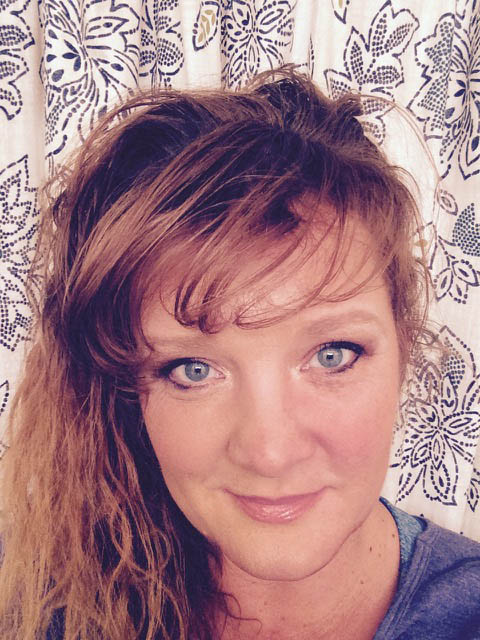Finding the Perfect Image

You’ve seen it, somewhere. That one specific image. Was it from your mind’s eye, the bus stop, the back of a lost postcard?
For broadcast design professionals, that eyebrow-raising query is often followed by the same set of steps: a hurried hunt-and-peck search online — often starting with a royalty-free stock imaging service — only to rout out a not-quite-right stack of images that don’t capture what you imagined. The hue is off, the perspective is wrong, or, quite often, the perfect picture is rendered unavailable by the clunky white watermark that’s stamped across its face.
Request a free trial of Adobe Stock and Creative Cloud for enterprise.
For designers, marketers and production staff at a broadcast group, this search-and-find process is often made doubly difficult when having to switch in and out of programs in an attempt to determine if the found format will actually integrate with the program you’re working on.
And after an image is found and downloaded, there’s the issue of properly compositing and manipulating images for the final product — as well as ensuring that you aren’t paying two, three, four times across your broadcast group for the exact same image.
A recent study conducted with a group of design professionals came back with an answer that should be a surprise to no one: “shorter is better” when it involves searching for and manipulating specific stock photography images. That was the consensus from the study conducted by Pfeiffer Consulting, which pulled the curtain back on the way that design professionals complete their tasks in the real world. The study started simply by analyzing the minimum number of steps necessary to achieve a given result in a target application. Once this list was compiled, the study examined the workflow process that a professional takes to assess productivity gains that different programs may — and in some cases, may not — offer.
Take this real-world hypothesis: A broadcast production professional sitting at her desk pulls up an image of a snowboarder rounding off the top of a mogul for use in a project. But the white balance of the snow is wrong, the afternoon shadows are too dark, and the composition on the page is misaligned. Typically in situations like this, the Pfeiffer study found, nearly five minutes are invested in reworking an image: color correcting, physically documenting the exact values of the adjustment and manually applying them to a licensed high-resolution file.
Broadcasting & Cable Newsletter
The smarter way to stay on top of broadcasting and cable industry. Sign up below
There’s five minutes gone in licensing and reworking one single image.
“In a normal circumstance you might go to a stock photo website and they might offer you the opportunity to download a proof image – a low-quality, low-resolution watermarked image,” said Dave Cross, a digital designer and educator. “That’s great, but if you do things to it like mask it and change the blend mode, when you do get [ownership of] the full image, you have to start over.”
What to Look for – Six Key Questions
In reality, the challenges for broadcast enterprise and production professionals are quite different than for those of smaller creative studios. An enterprise-level broadcaster must determine how an image service would scale across dozens of facilities, whether the service is offering enough images to sustain a large broadcast group, and how truly well a service would integrate into the technology that drives a broadcast facility’s workflow. Some issues to consider:
How Well Does It Integrate
Take a look at the ways in which a stock image service might integrate with your existing applications. Can you access the service through an application in which your staff is already well experienced? Or are you required to pull away from a familiar design and creation software to log on to another device to access images? Current stock image systems should offer tight in-application integration with design and photo editing technologies — which is particularly important when you have multiple operators working across multiple locations.
How Accurately Does It Search and Find
It’s all well and good to have that ideal image in your mind’s eye; it’s quite another to be able to find it in a vault of millions of images.

Ensure that any stock photo system you consider offers detailed search fields that allow you to not only find the image that you’re looking for, but offers the ability to wisely manage and compile different search strings within different software applications.
How Well Does It Work for Enterprise
There’s nothing quite so disappointing to see a creative team wrap up their work, only to find that use of an image is constricted by licensing snafus or limited press runs. Ensure the program offers clear licensing information, well-defined indemnification information and adequate details on use limits. Ideally, images can be licensed directly from within the design application.

For professional enterprise applications, it’s also a good idea to attempt to find a program that offers non-watermarked high-res versions. On professional projects, it’s ideal to be able to showcase a rough draft that isn’t saddled with a cut-rate-looking stock watermark label.
How Automatic is Automatic
Large, creative design projects may end up relying on one particular image in different mediums, at different sizes, in different scenarios. If exact shadowing or highlighting is completed on one image, determine if the program you’re working in requires that image to be manipulated manually in every instance, or if the updates automatic in nature. Look for systems that track edits so that changes made to watermarked images are automatically applied to the final licensed high-res image, which will eliminate unnecessary re-editing and help the production department deliver a consistent brand message.
How Well Does It Support Multi-Device Creativity
No longer tethered to a desktop, design professionals may find they do their best brainstorming on a phone or their best design musings on a handheld tablet. Determine if the stock photo program you’re considering works across all mediums — including desktop, tablet and, yes, even the phone — and how well that program coordinates across those different devices.
Wait… Haven’t I Seen This Before?
Of key importance for larger broadcast groups is the ability to keep track of already-licensed images. Ensure that the stock program you’re working with has the ability to track image usage. For example, if an image has been used by a station in Iowa, and a station in California wants the ability to use that same image, the tracking features within a stock photo program must clearly delineate those rights — and offer an asset management component to pluck that already-licensed image out and download it for use. Determine if a stock photo provider will allow you to track what people are using and what your enterprise has already licensed.

One option on the market, Adobe Stock for enterprise, is putting access to photos, graphics and videos within the Adobe group of Adobe Creative Cloud applications, which allows a business to simplify the act of finding, sharing, licensing and tracking images and videos.
“The goal of creative work is to generate emotions,” said Dan Rubin, a designer and creative director who has used several Adobe solutions including Creative Cloud and Adobe Stock.
The combination of design and imagery is very powerful. By taking creative concepts and keywords and entering them into Adobe Stock, Rubin is able to search for those images best represent his vision of a project. “Having those libraries inside the app means I don’t have to leave my work environment to access my images,” Rubin said.
One specific benefit for broadcast is that the Adobe Stock collection now offers users access to 4K Ultra HD video assets. Adobe Stock also offers a CreativeSync feature that allows users to add images and videos to a Creative Cloud library, thereby giving access to different users via desktop and mobile devices.
Ready to get started? Simply fill out the form to request a free trial of Adobe Stock and Creative Cloud for enterprise.
Susan Ashworth is the former editor of TV Technology and a longtime contributor to Radio World. In addition to her work covering the broadcast television industry, she has served as editor-in-chief of two housing finance magazines and written about topics as varied as education, chess, music, sports and the connected home environment. She lives in the Bay Area to be close to the San Francisco 49ers and the fog.

